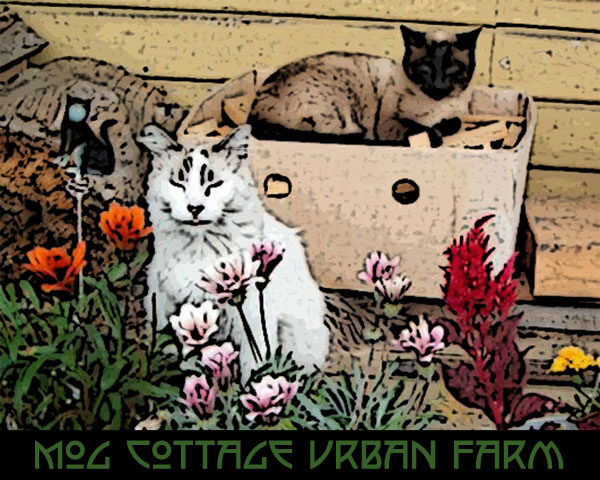 |
| Those telltale holes mean cabbage moths have been at it. |
Last year, I didn't get kale planted until August. Actually, I have been known to let kale go to seed and it comes up on its own quite well, even in late fall! At this point, the moths were pretty much gone while the kale started to grow (draping a bit of Reemay over the bed long enough to establish the plants). Kale over-winters nicely here and I like to use kale mainly in the fall and winter months in soups and stews. It also takes up a lot of space. So, the kale can grow and hog the beds when other crops won't grow because it's too cold. It slows down when the weather gets frosty, but perks right back up when the temperature returns to the mid 40's. In mid-spring, it goes to seed, so it gets yanked. I have enough kale seed to last longer than the seed will be viable.
With that, my winter beds consist mainly of garlic, onions, fava beans and kale. Occasionally, I'll plant other cabbage crops such as Filderkraut and, yes, purple sprouting broccoli is on the list. I recently purchased a new packet of the Ed Hume PSB seeds that famously exploded and lasted three years until an infestation of aphids took it out.
So, for summer, I'm planting a great substitute for kale: Swiss chard. It's a great leafy green from the beet family and can be used in most any recipe as a substitute for kale. It takes up less space, leaving room for summer crops. In fact, Swiss chard has a higher nutrient density than kale containing copious amounts of Magnesium, Phosphorus, Potassium, Copper, Beta carotene, Isoleucine and Phenylalanie. Swiss chard is a biennial that pretty much over-winters too, but tends to look rather ragged with time, so I pull it out when it's time to plant the kale.
Although chard supposedly attracts moths too, I've experienced only one issue with Swiss Chard: mollusks. I end up mulching with Slug-go and spent coffee grounds as no amount of Reemay keeps those buggers out. Here, in the great Pacific North-wet, slugs and snail season is 12 months. In the gardening world, it's always something.

Thanks, Debra! Great info! I was feeling guilty about not getting kale in early this year. :-)
ReplyDelete